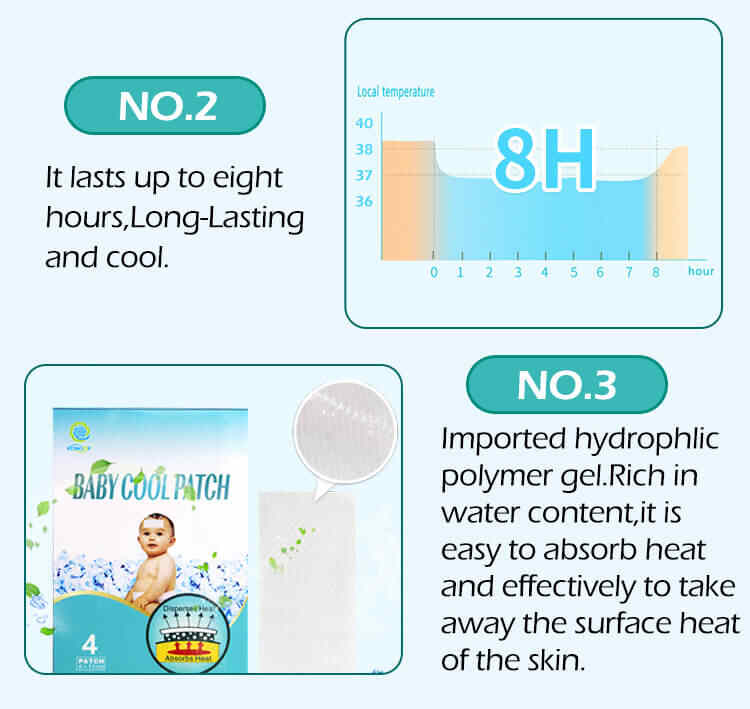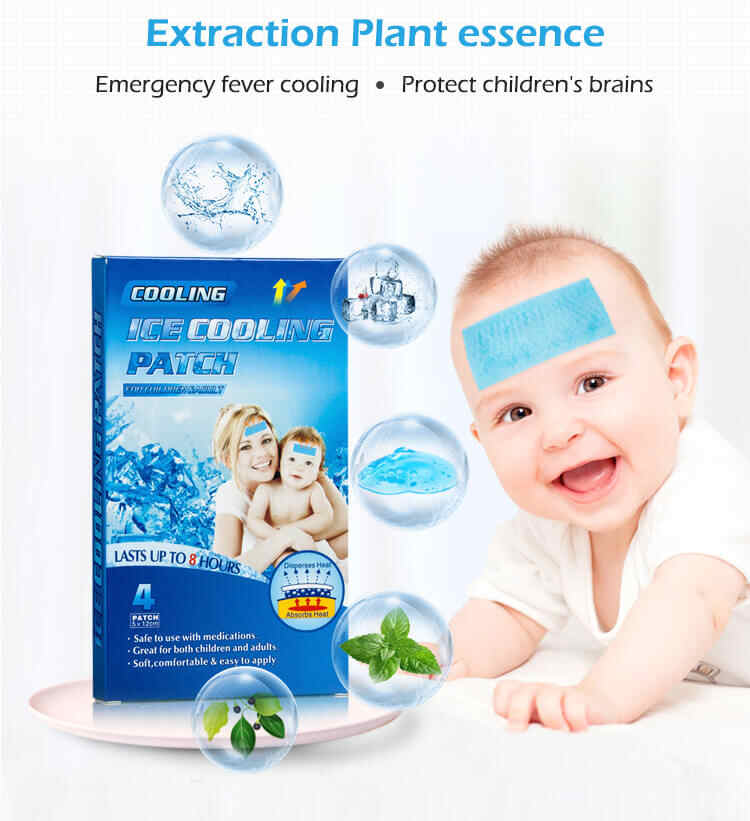How Can I Verify a Hydrogel Cooling Patches Supplier’s Compliance?
A Practical Guide for Brands, Distributors, and OEM Buyers
The global demand for hydrogel cooling patches is growing at a remarkable pace, with applications ranging from fever relief for children to post-sports recovery and cosmetic skin cooling. But in a market flooded with suppliers, not every hydrogel cooling patches Manufacturer adheres to strict quality and regulatory standards. Partnering with a non-compliant supplier can lead to customs delays, failed product launches, or even legal penalties.
Whether you’re planning to launch Custom hydrogel cooling patches, enter into a hydrogel cooling patches OEM partnership, or build your own Private Label hydrogel cooling patches brand, verifying a supplier’s compliance is non-negotiable. In this guide, we will walk you through proven methods to evaluate and verify your hydrogel cooling patches Supplier before making any commitments.

1. Why Supplier Compliance Matters in the Hydrogel Cooling Patch Industry
Compliance in the hydrogel cooling patch industry is more than just ticking boxes—it is your safeguard for product safety, brand reputation, and long-term profitability. A compliant hydrogel cooling patches Manufacturer ensures:
Product safety through validated materials and tested formulations.
Regulatory adherence to national and international laws.
Quality consistency with every batch produced.
Market access by meeting import and labeling requirements.
A single compliance failure can result in rejected shipments, fines, or product recalls — costly mistakes that can be avoided with proper supplier verification.
2. Key Compliance Standards for Hydrogel Cooling Patches
A. ISO 13485 Certification
ISO 13485 is the global standard for medical device quality management systems. Many hydrogel cooling patches OEM suppliers obtain this certification to demonstrate adherence to rigorous manufacturing protocols. Even if your cooling patches are sold as cosmetic products, an ISO 13485-certified facility reflects strong quality control processes.
B. CE Marking (for the EU)
If you plan to sell in the European Union and make medical claims, the patch must meet MDR (Medical Device Regulation) requirements. A compliant hydrogel cooling patches Manufacturer should have CE certification for the relevant product category.
C. FDA Registration (for the USA)
In the United States, hydrogel cooling patches marketed with therapeutic claims are often classified as Class I medical devices. Your supplier should be listed in the FDA’s Establishment Registration database.
D. Local Health Authority Approvals
Markets like China, Japan, Korea, and the Middle East require local product registration. A trustworthy hydrogel cooling patches Supplier will have a portfolio of country-specific approvals.
E. Safety and Biocompatibility Testing
Even for non-medicated Custom hydrogel cooling patches, suppliers should provide:
Material Safety Data Sheets (MSDS)
Skin irritation and sensitivity test results
Heavy metal and microbial contamination reports
3. Step-by-Step Guide to Verifying a Hydrogel Cooling Patches Supplier’s Compliance
Step 1: Request Documentation Up Front
A credible supplier should provide compliance documents before you sign contracts. Essential records include:
ISO 13485 certificate
CE or FDA registration proof
Product test reports
GMP (Good Manufacturing Practice) certification
If a supplier hesitates or delays, it’s a red flag.
Step 2: Check Certifications with Official Authorities
Many companies fake certificates. Always cross-check with the issuing body:
For ISO, confirm with the certification body’s database.
For FDA, search the public Establishment Registration database.
For CE marking, request the EU Declaration of Conformity and verify the Notified Body number.
Step 3: Evaluate Manufacturing Facility Standards
If possible, conduct an on-site visit or hire a third-party inspection agency. Look for:
Clean and organized production lines
Segregated storage for raw materials and finished goods
Environmental control for hydrogel production to prevent contamination
Step 4: Review Product Labels and Packaging
Compliance extends to how your Private Label hydrogel cooling patches are presented. Labels must meet language, content, and regulatory requirements in your target markets. Your supplier should know these requirements and offer guidance.
Step 5: Confirm Traceability Systems
A compliant hydrogel cooling patches OEM supplier should maintain complete batch records, allowing any defective products to be traced and recalled efficiently.
4. Red Flags to Watch Out For
Avoid suppliers who:
Refuse to provide original compliance documents
Have inconsistencies in product test reports
Offer prices significantly lower than the industry average (often a sign of shortcuts)
Lack export experience to your target market
Remember: A low-cost deal with a non-compliant supplier often ends up costing more in the long run due to fines, delays, or recalls.
5. The Role of a Reliable OEM Partner in Compliance
An experienced hydrogel cooling patches OEM supplier doesn’t just manufacture products—they act as a compliance partner. The right OEM will:
Preemptively align production with your target country’s regulations.
Provide ready-to-use regulatory documentation.
Advise on claim wording to avoid unnecessary reclassification.
Maintain audit-ready facilities for customer and authority inspections.
This partnership is particularly valuable if you’re launching Custom hydrogel cooling patches or Private Label hydrogel cooling patches in multiple regions with different compliance requirements.
6. Case Study – Compliance Done Right
A European wellness brand wanted to launch Private Label hydrogel cooling patches in both the EU and the Middle East. Their chosen hydrogel cooling patches Manufacturer was ISO 13485 certified, had CE-marked products, and provided all safety reports.
Before signing, the brand:
Verified CE documents with the Notified Body.
Checked FDA registration for potential future US expansion.
Conducted a virtual facility audit.
As a result, the launch was smooth, customs clearance was fast, and the brand avoided delays that often plague newcomers.
7. The Cost of Ignoring Compliance Verification
If you skip supplier compliance verification, potential consequences include:
Product seizures at customs due to missing documents.
Heavy fines for mislabeling or false claims.
Reputation damage if unsafe products reach consumers.
Wasted marketing investments if products cannot be sold.
In some cases, non-compliance can even result in legal bans from certain markets — a permanent setback for your business.
8. Tips for Ongoing Compliance Monitoring
Verifying a supplier’s compliance is not a one-time task. To ensure continued adherence:
Schedule annual audits or inspections.
Request updated certificates each year.
Monitor regulatory changes in your target markets.
Keep your own compliance files updated for every batch received.
Conclusion
Verifying a hydrogel cooling patches Supplier’s compliance is one of the most important steps in building a safe, reputable, and profitable product line. Whether you are sourcing from a hydrogel cooling patches Manufacturer, entering into an OEM arrangement, or developing Custom hydrogel cooling patches for your Private Label brand, due diligence protects you from regulatory, financial, and reputational risks.
The most successful brands work only with OEM partners who can prove their compliance, provide verifiable documentation, and maintain world-class manufacturing standards. By following the steps outlined in this guide, you can confidently choose a supplier who will support your business growth while keeping you fully compliant in every market you enter.
Related Questions & Short Answers
Q1: What is the first step in verifying a hydrogel cooling patches Manufacturer’s compliance?
A: Request and review official certificates like ISO 13485, CE marking, and relevant test reports.
Q2: Can I use my OEM supplier’s certifications for my Private Label hydrogel cooling patches?
A: Often yes, especially if the product formula and specifications are identical, but always confirm with regulatory authorities.
Q3: How can I detect fake compliance certificates?
A: Cross-check with issuing authorities or use official verification databases.
Q4: Is a factory visit necessary?
A: It’s highly recommended, but if not possible, a trusted third-party inspection agency can perform a compliance audit on your behalf.
Q5: Do all markets require the same compliance documents?
A: No, each country has different requirements. Work with a hydrogel cooling patches OEM that understands your target market’s regulations.






